With over 1,000,000 words in the English language, why is it that we tend to use the same words over & over? This blog shows a hierarchical approach to help you branch out and choose more descriptive words.
But first, to get you into the mood for a blog about words, here's a picture of my friend Thelma's dictionary. It's from 1929, and belonged to her Grandma Betty - this book certainly has character, eh?!?. How long has it been since you used a paper copy of a dictionary or thesaurus?
And now, on with the blog...
English teacher Kaitlin Robbs came up with a neat tool to help you traverse a hierarchical list of words related to emotional states, to come up with more specific words than just happy, sad, etc. She designed a word wheel, with the more general words at the center, and more specific words radiating towards the outer edges.
Here's a snapshot of her wheel:
This seems like a useful tool, and an interesting layout ... therefore I thought I'd try to create something similar using SAS. I first typed out all the words in a text file, and imported them into a dataset. While I was typing the words, I was suspicious that a few of them might not be spelled correctly, therefore I used SAS' Proc Spell to test them.
proc spell words='emotion_word_wheel_original.txt' verify suggest; run; |
This check was quick & simple, and certainly worth the effort. The analysis flagged five words - of the five, the word 'disrespected' is probably OK, but the other four are definitely misspelled in Kaitlin's wheel. Here is the output of Proc Spell:
Next came the fun part - creating the geometry and layout of the custom visualization. I created 3 separate annotate layers for the three rings of the wheels, and overlaid them. I used the annotate pie function to create each pie slice in a data step, and added a text label in the middle of the pie slice (using the cntl2txt function to determine the position for the label). The pie slices are evenly spaced in the outside ring, but the sizes of the inner ring slices vary depending on the number of words hierarchically under them, therefore it's a little trickier to calculate the sizes for those slices. Below are the three individual annotate layers (click each of them if you want to see more detailed images):
And here is the final SAS chart, with the three layers overlaid. Click the image to see the full size interactive version, and then each word will have html hover-text (in case you have trouble reading the angled text), and also drill downs to launch a Google search to look up the definition of each word.
Although the wheel is cool, it occurred to me that some people might have difficulty reading the words at all those angles, so I also created an alternate version using a simple table. Below is a snapshot of the top of the table - click it to see the full table:
So, what's your favorite way to find the perfect word? Feel free to share your tips & tricks in a comment!
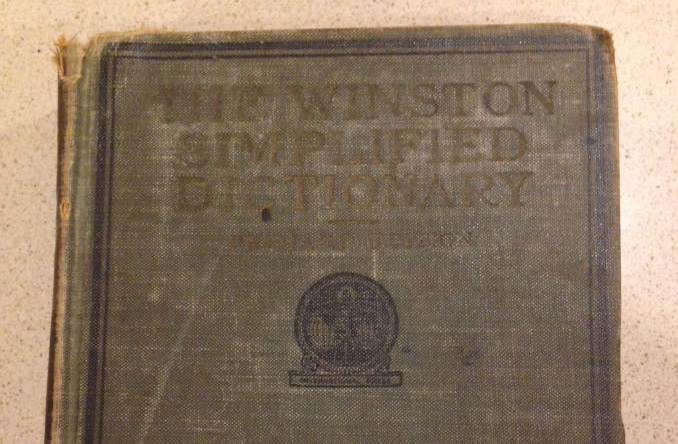
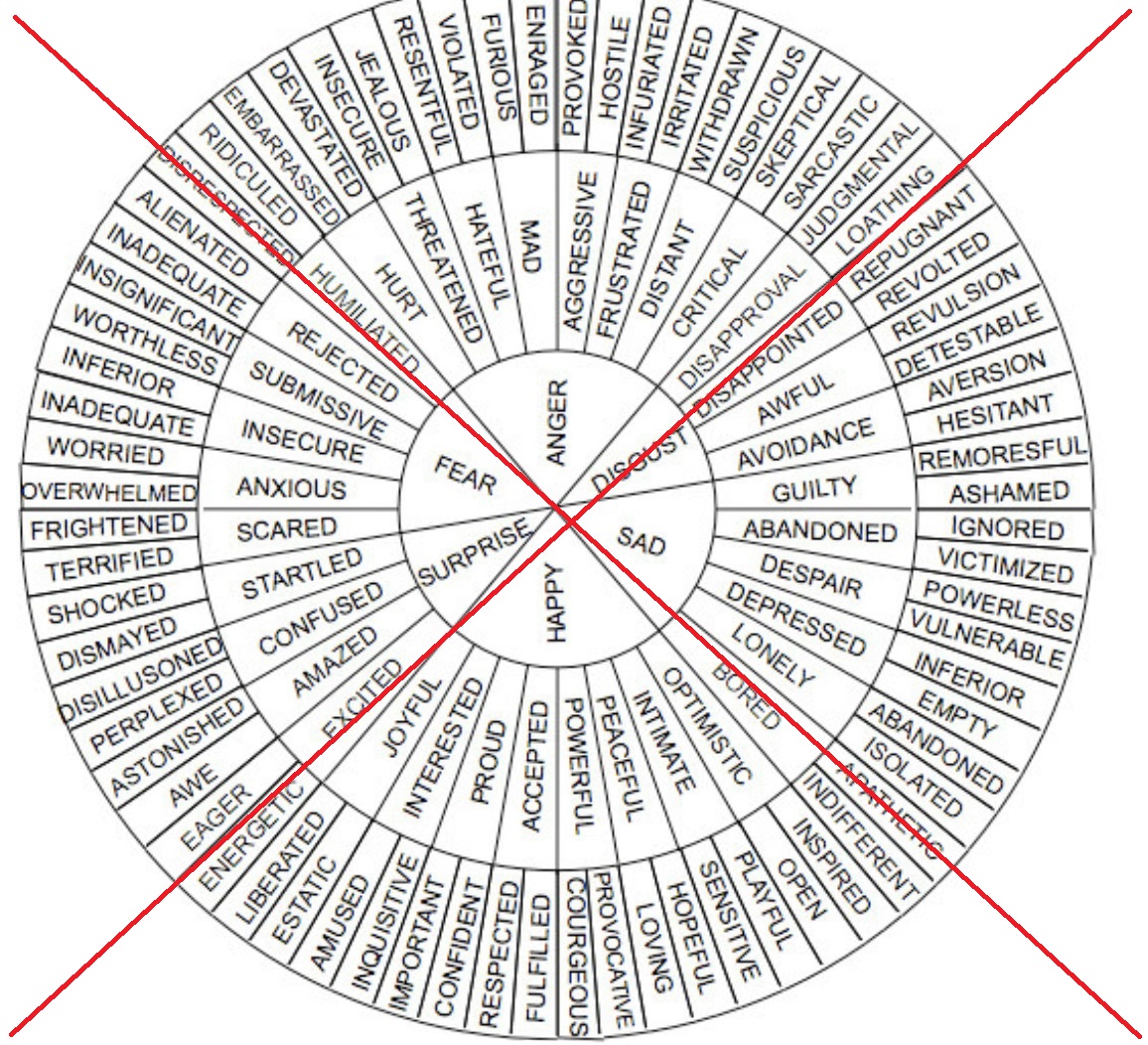
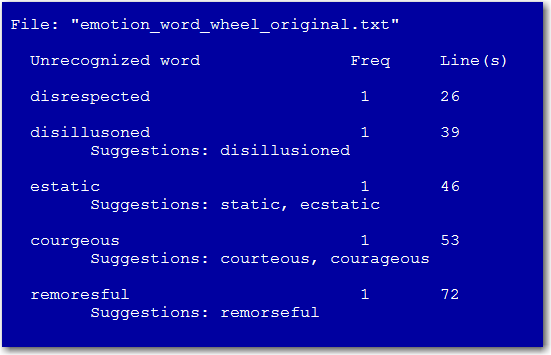

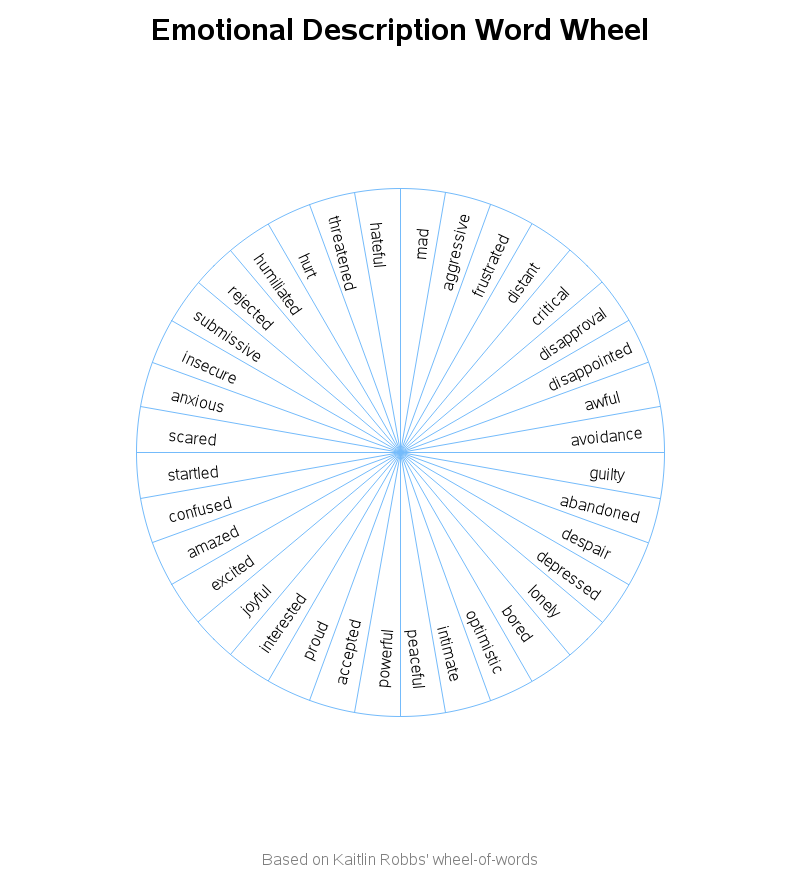
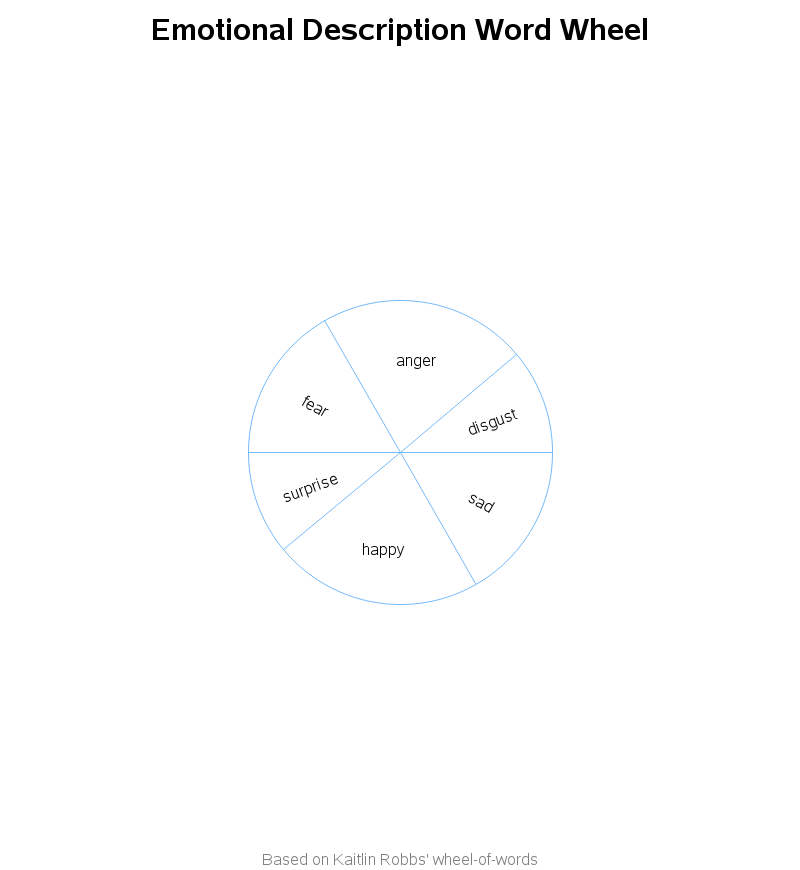








10 Comments
Much appreciated Robert. This could be helpful to students (review school through graduate school) and in addition the overall public. Authors will love you for expanding their word power!
http://wordmaker.info/starting-ending/s-g.html
Hi Robert,
This is fantastic! I had the other word wheel but I was looking for something more advanced and I'm so glad that I stumbled upon yours. :)
I love how you showed the process you went to to achieve the final word wheel.
I was wondering if you might be able to provide a blank template for the final emotion description word wheel please?
I'm a teacher and have students at many different English levels. This will help all of them but for the kids that struggle, I will go through a process to develop their vocab that is more suited to their level.
I've tried to create it but I have NO idea how to! lol
Thanks,
Claire
I've created a special 'blank' version just for you! :)
http://robslink.com/SAS/democd82/blank_word_wheel.png
I am an English teacher in Taiwan and my students really loved this when I showed it to them. Now, since I have no SAS knowledge, I am wondering if it is possible to build a program that would allow input from a file to create the same image for different word sets. I think this could be very valuable; in fact, I know many that would pay for an app that would do this.
Thanks Robert. This could be useful to students (grade school through grad school) as well as the general public. Writers will love you for increasing their word power!
Where there is a wheel, there is a word... hehehe Great post Rob! Love the revisit of proc spell... it's been a while.
My favorite way to find alternate words is on http://www.thesaurus.com. As a child, I often used a paperback thesaurus to find the perfect word. That may have been the last time I used a paper copy.
I remember back in college, using a thesaurus to try to find another word for thesaurus (I can't remember whether or not I found such a word!)
Thanks Rob - just learnt a new word onomasticon! http://www.thesaurus.com/browse/onomasticon
Robert,
Wow; another great post! What a very clever topic and use of SAS/Graph; especially for writers.
Your final graph, "Emotional Description Word Wheel", had me at a loss for words:-)!
----MMMMIIIIKKKKEEEE
Well said, Mike! :)